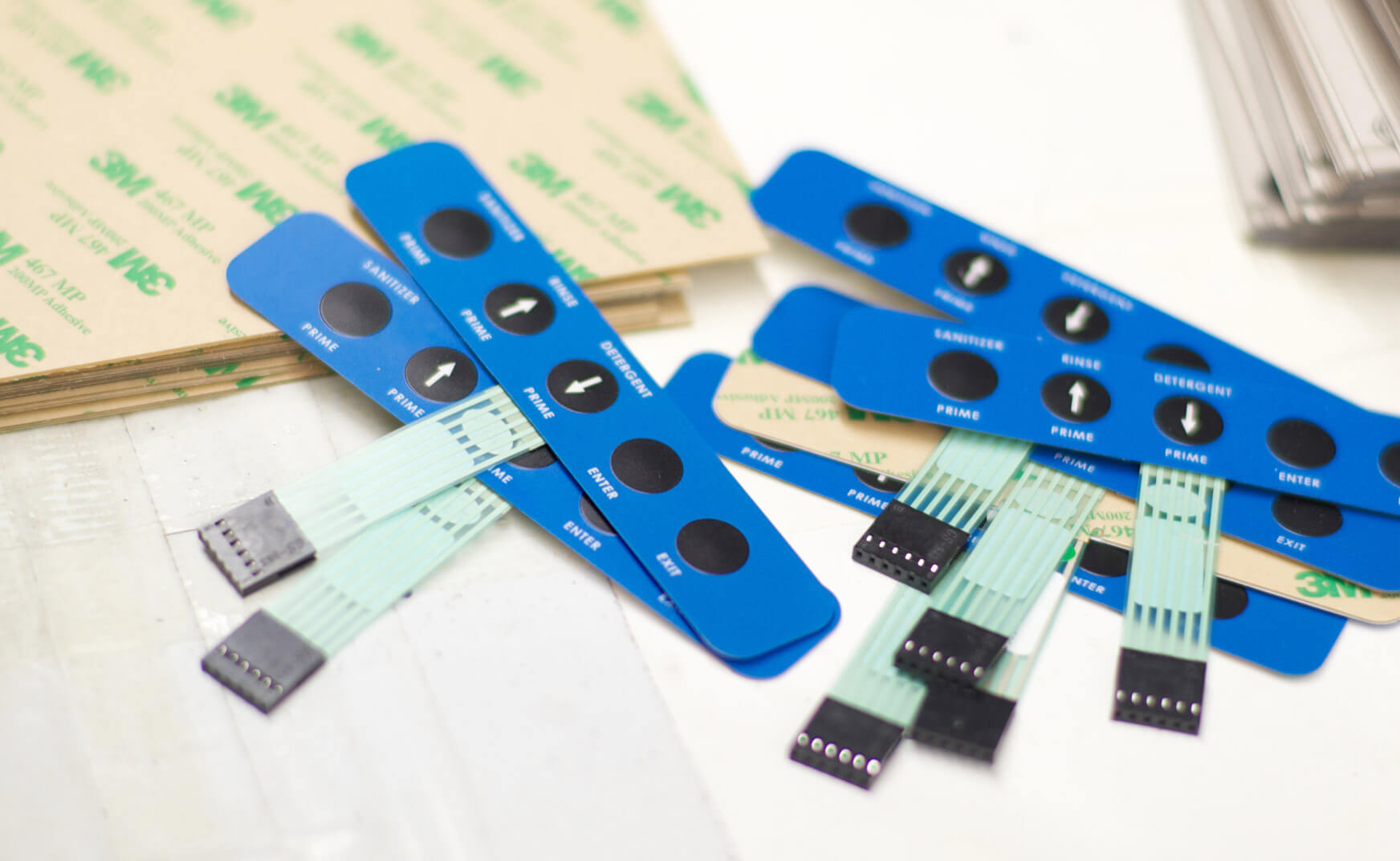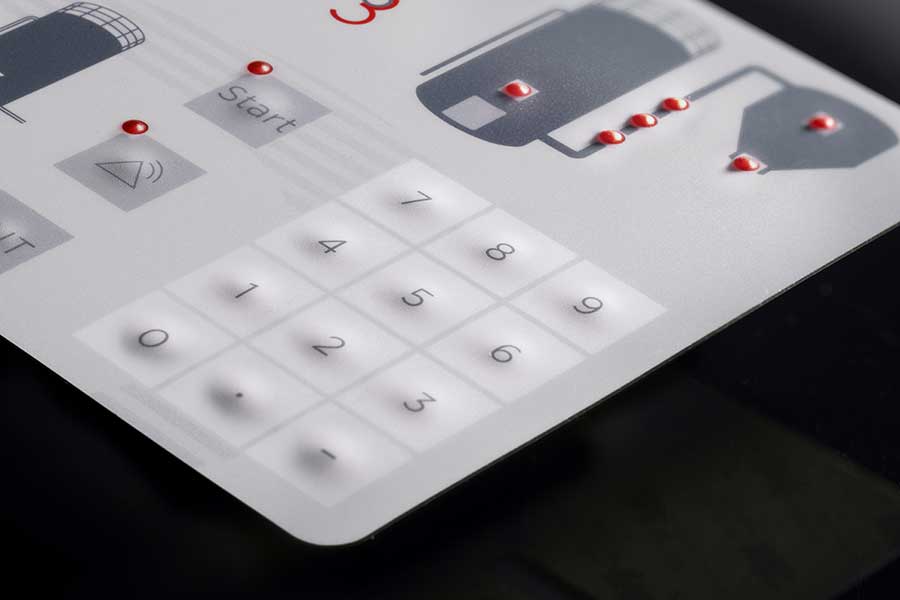Why Membrane Changes Are Vital for Sturdy Control Systems
Membrane buttons play a crucial duty in making certain the sturdiness and dependability of control systems across various sectors. Their special building and construction permits them to withstand challenging ecological variables such as moisture, temperature extremes, and physical wear. This resilience not just prolongs the lifespan of the systems they offer yet likewise reduces maintenance demands. As we check out the multifaceted benefits of membrane buttons, it ends up being obvious that their importance transcends plain performance, affecting user experience and operational performance. What further ramifications do these characteristics hold for the future of control system layout?
Overview of Membrane Buttons
Membrane layer buttons are functional and reliable components typically used in numerous digital control systems. The visuals overlay gives both useful and visual layout, while the spacer layer guarantees that the switches are activated only when pushed.
Membrane layer switches are frequently preferred in applications needing a small and lightweight design, making them ideal for portable tools, clinical tools, and commercial equipment. They can be tailored to fulfill certain individual demands and can include numerous attributes such as backlighting, responsive comments, and several shades. Membrane layer buttons are immune to dust, dampness, and pollutants, making them suitable for atmospheres where durability is crucial.
Benefits of Resilience
In many applications, the toughness of membrane layer changes offers substantial advantages that enhance their overall efficiency and dependability. These buttons are developed to withstand severe atmospheres, making them perfect for usage sought after problems such as high humidity, extreme temperatures, and direct exposure to chemicals. Their durable building and construction assists to stop damage from physical impact, making sure lasting capability and reducing the demand for frequent substitutes.
Furthermore, membrane layer buttons are resistant to deterioration, which is crucial in applications where constant interaction happens. This durability equates to lower upkeep costs, as companies profit from reduced downtime and fewer service interruptions. In addition, the encapsulated design of membrane changes shields internal components from dust and dampness access, further adding to their lifespan.
Another benefit is their capacity to keep regular efficiency over time. With a high tolerance for mechanical stress, these switches preserve their tactile feedback and electrical integrity, making certain user complete satisfaction. Eventually, the toughness of membrane layer changes not only improves operational efficiency but additionally promotes confidence in their dependability, making them a favored choice for control systems across various fields.
Applications in Various Industries
Resilient control systems utilizing membrane buttons find extensive applications throughout a variety of markets, each benefiting from the one-of-a-kind characteristics these switches offer. In the clinical market, membrane buttons are important for gadgets such as individual monitors and analysis equipment, where reliability and convenience of cleansing are critical. Their resistance to wetness and impurities guarantees they keep functionality in sterile settings.
The automotive sector leverages membrane layer buttons for control panel controls and infomercial systems, where they provide sleek, low-profile user interfaces that enhance user advice experience. These buttons are also developed to hold up against severe problems, including exposure to extreme temperatures and resonances.
In industrial settings, membrane layer buttons are typically used in machinery control board, using responsive responses and toughness essential for high-usage applications. Their ability to stand up to chemicals makes them suitable for producing environments where spills and pollutants are regular.

Customer electronics, such as kitchen area devices and push-button controls, also make use of membrane layer switches for their versatility and cost-effectiveness. Overall, the versatility and durable nature of membrane layer switches make them essential across numerous sectors, making certain effective operation and longevity in control systems.
Layout and Aesthetic Allure
While functionality is vital, the style and visual charm of control systems geared up with membrane Read Full Article layer switches play a vital function in individual interaction and total experience (membrane switch). The aesthetic design of these buttons can considerably affect individual assumption and communication. A properly designed membrane button improves the beauty of the tool, making it much more enticing to customers and fostering a link between the individual and the product
Membrane changes use a lot of versatility in style, enabling suppliers to customize graphics, shades, and appearances to align with brand identification and item looks. The use of lively shades and unique patterns can draw focus, while responsive responses can enhance the individual's communication with the device. Furthermore, the capability to incorporate LED indications and backlighting into the membrane layer button style supplies both practical and aesthetic benefits, boosting exposure and functionality in numerous settings.

Enhancing User Experience

Moreover, membrane layer buttons can be tailored to integrate graphical user interfaces, boosting use by presenting information in a clear and user-friendly manner (membrane switch). This modification can consist of symbols, labels, and shade coding that overview customers through complicated capabilities with ease. Additionally, their flexibility enables for integration in different settings, ensuring consistent performance whether in industrial equipment or consumer electronics
The resilience of membrane buttons likewise plays a vital function in individual experience. By enduring severe conditions and prolonged use, these buttons decrease the possibility of system failings, therefore advertising dependability and customer confidence. Inevitably, the home strategic use of membrane layer switches not just raises functionality however likewise considerably enhances user communication with control systems, making them an important element in contemporary design.
Final Thought
